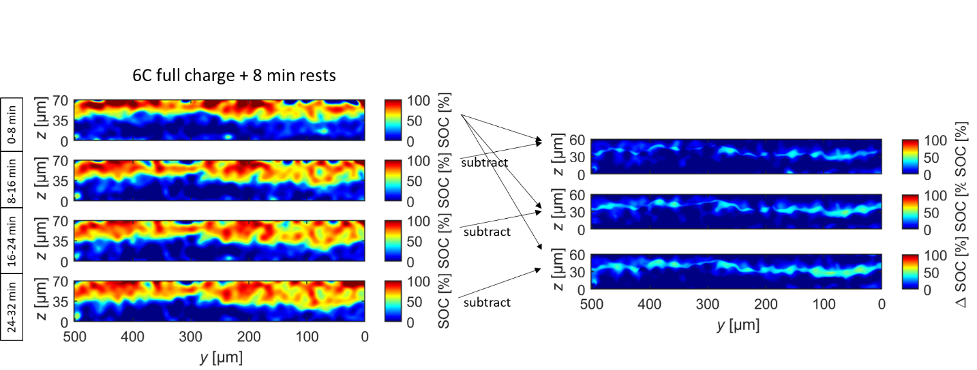Fast Charge
Research Overview & Tasks
Fast charging of Lithium-ion batteries could make electric vehicles as versatile as internal combustion-based vehicles. The main limiting factors to extremely rapid charging (6 degrees Celsius and beyond) are parasitic lithium metal plating on the anode and particle cracking of the cathode active material. Since the ion transport between the electrodes is mediated by the electrolyte, intrinsic transport limitations of the electrolyte also become important when extreme concentration polarization sets in.
Berkeley Lab is developing solutions to address these limitations. Diagnostic techniques are used to detect lithium metal deposition and guide the development to mitigation approaches.

High-energy Lithium-Nickel-Manganese-Cobalt-Oxide (NMC) particles with innovative microstructures and surfaces that alleviate cracking, while improving charge transport, are being designed and developed; these include single crystals and polycrystalline particles with architectures optimized for fast charging. Electrolytic compositions are being optimized, with the view of not simply maximizing bulk transport and minimizing interfacial impedance, but to minimize the formation of inactive plated lithium deposits.
The Battery Group Researchers
Additional Berkeley Lab Collaborators
 Nitash Balsara
Nitash Balsara
Fast Charge Research Area Lead
Faculty Senior Scientist, UC Berkeley
Senior Staff Scientist, Material Sciences Division